So, you think you know sea turtles? Let’s dive a bit deeper with one of the ocean’s more mysterious and resilient travelers: the Olive Ridley Turtle.
These creatures are not just another pretty face in the sea turtle lineup; they’ve got some serious eco-credentials and a knack for pulling off one of nature’s most spectacular gatherings.
Whether you’re a die-hard conservationist or just a casual admirer of nature’s wonders, the Olive Ridley Turtle has something to catch your interest.
What is the Olive Ridley Turtle?
The Olive Ridley Turtle, scientifically known as Lepidochelys olivacea, might not be the largest or the flashiest of the sea turtles, but it certainly has its own allure. This species is one of the smallest in the sea turtle family and earns its name from the generally olive-green hue of its heart-shaped shell.
These turtles are notorious for their mass nesting called arribada, where thousands of females come together on the same beach to lay eggs. It’s like a turtle festival, except there’s no music, just a lot of digging and egg-laying.
Olive Ridleys are quite the globe-trotters; they’re found in warm waters of the Pacific, Atlantic, and Indian Oceans, with their migratory patterns covering thousands of miles. They’re the sort of creatures that remind us of the boundless wonder of nature – seemingly delicate but tough enough to navigate vast and treacherous oceanic highways.
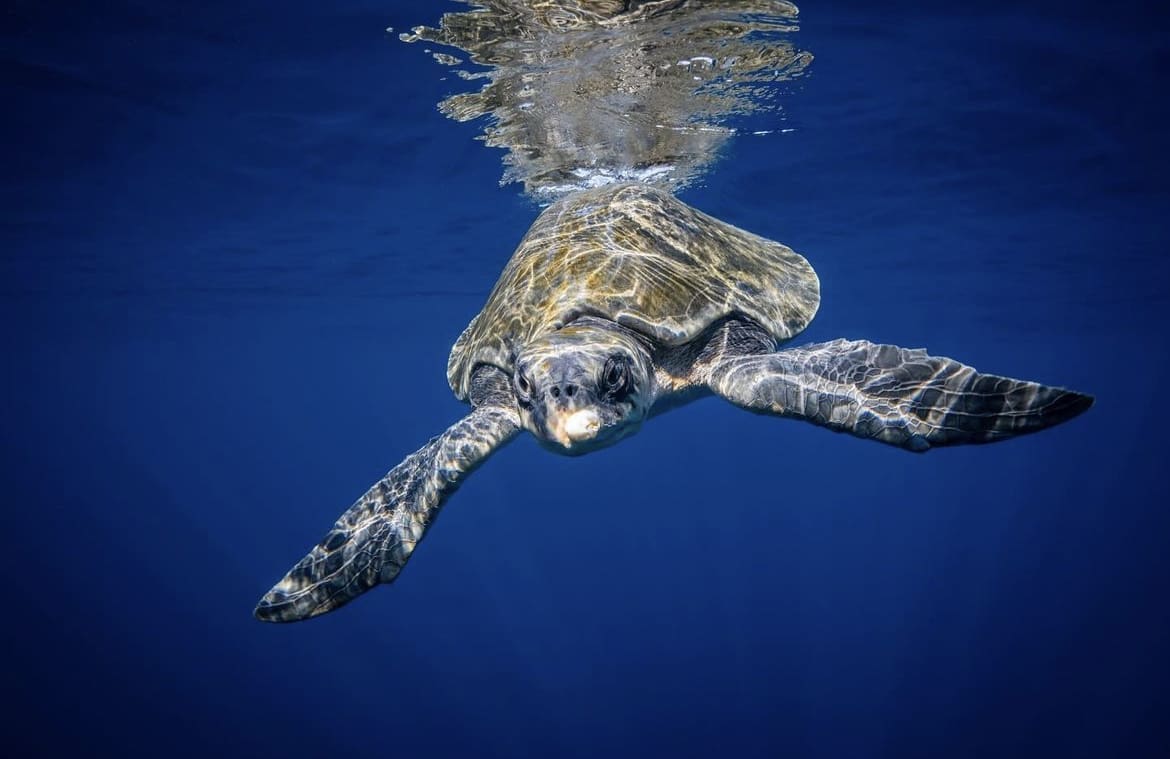
What do Olive Ridley Turtles Look Like?
When you first spot an Olive Ridley Turtle, you might not be overwhelmed by its size. These turtles typically weigh in at about 100 to 115 pounds and measure around 2 feet in shell length – that’s pretty petite compared to some of their cousins like the leatherback. But what they lack in size, they make up for in sheer numbers and adaptability.
Their shells are relatively streamlined, which makes them strong swimmers over long distances. This isn’t just for show; these adaptations make it easier for them to travel across oceans and escape the clutches of predators.
The color of their shell and skin blends perfectly with the sandy beaches and murky waters, giving them a natural camouflage against predators and a subtle beauty that doesn’t scream for attention but definitely deserves it.
Physically, the Olive Ridleys are equipped with a hard, bony shell, unlike the rubbery texture of the leatherback turtle’s shell. Their heads are quite small with a somewhat pointed snout that makes them look perpetually curious about their surroundings. The limbs are strong flippers, which show evolutionary craftsmanship at its best, designed not just for swimming but also for maneuvering on the beaches during those epic nesting events.
How Big are Olive Ridley Turtles?
Don’t let the compact size fool you—Olive Ridley Turtles may be small compared to other sea turtle species, but they pack quite a punch. Adult Olive Ridleys typically weigh between 75 to 100 pounds and stretch about 22 to 28 inches in shell length. Their size makes them more agile and a bit more elusive, which is a boon when dodging predators and navigating through their oceanic habitat.
Interestingly, their size also plays a critical role during nesting. Being smaller allows them to gather in thousands without causing complete chaos on the beaches during the arribada. This is nature’s way of saying, “There’s strength in numbers, but let’s keep it manageable.”
Olive Ridley Turtle Coloration
The Olive Ridley Turtle sports a color palette that blends seamlessly with the marine environment. The olive-green color of its carapace (that’s the top shell, for the uninitiated) not only gives this species its name but also offers excellent camouflage in the murky waters they often inhabit. Younger turtles tend to have a more vibrant hue, which gradually darkens to a deeper olive as they age.
This adaptive coloration is crucial for survival in the wild, where blending in is often the first line of defense against predators. It’s a brilliant evolutionary strategy: stay unobtrusive, survive longer, reproduce more, and ensure the species thrives.
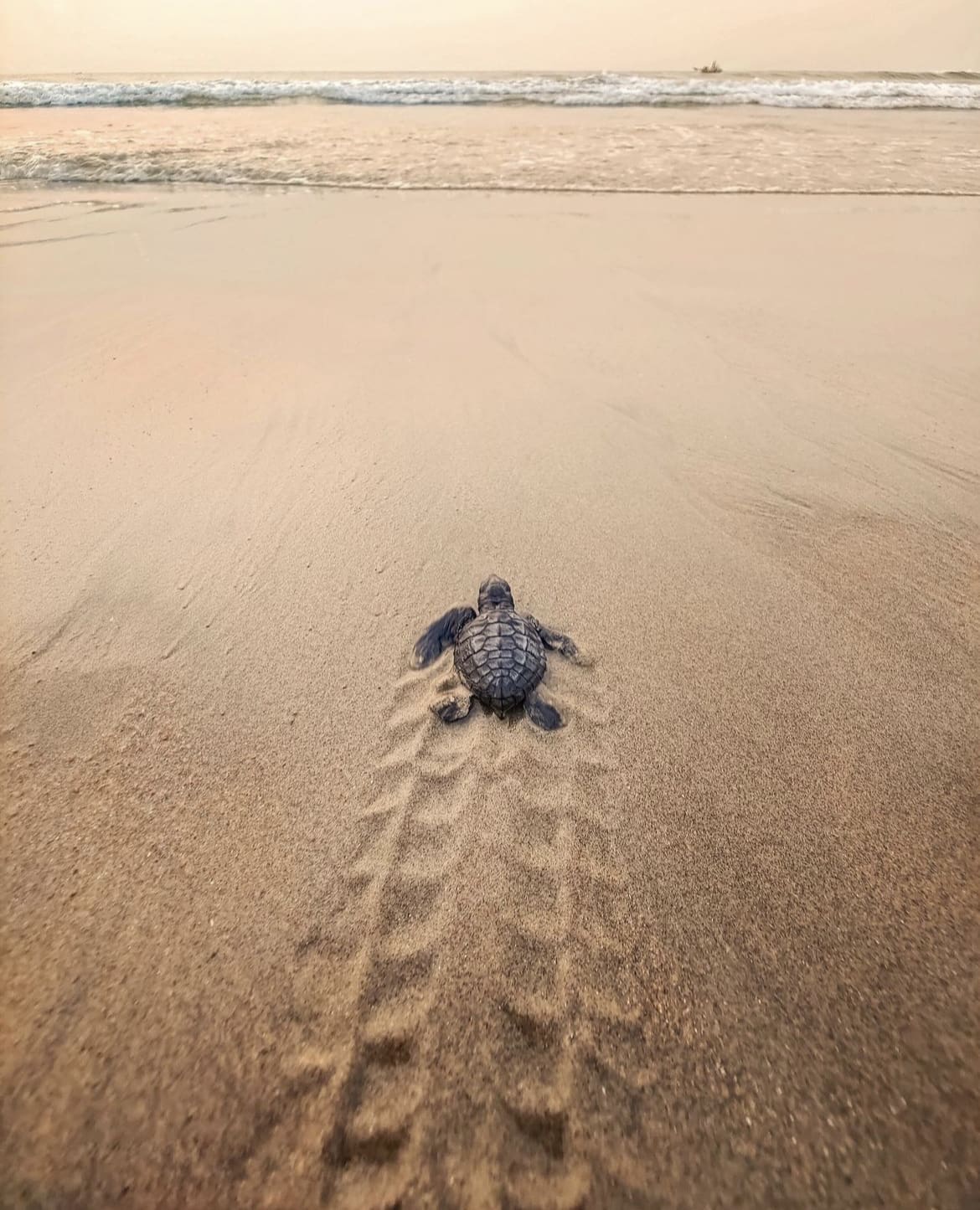
Olive Ridley Turtle Shell
Let’s talk about the Olive Ridley Turtle’s shell, which is a marvel of natural engineering. The shell consists of two parts: the carapace on top and the plastron on the underside. The carapace is typically heart-shaped and streamlined, designed to slip through the water with minimal resistance. This shape is vital for a life spent mostly at sea, where efficiency in movement can mean the difference between catching a meal and becoming one.
The shell isn’t just for cutting through water; it’s also the turtle’s main protection against predators. The hard, bony structure can withstand incredible pressure, a critical feature when you’re a bite-sized snack in the eyes of a shark. The Olive Ridley’s shell also features large, overlapping scutes (the external plates made of keratin) that add an extra layer of toughness and durability.
These scutes bear the wear and tear of a life spent roaming the open ocean and sometimes show signs of battles survived, from shark bites to encounters with fishing gear.
Olive Ridley Turtle Beak
The beak of an Olive Ridley Turtle isn’t just a typical turtle feature; it’s a specialized tool evolved for survival. Unlike some of their sea turtle cousins who might have broader diets, Olive Ridleys have a relatively narrow, pointed beak. This adaptation is perfect for their preferred diet, mainly consisting of soft-bodied creatures like jellyfish, salps, and other small marine animals. The sharp edges of their beak allow them to easily grasp and slice through their slippery prey.
This precision tool also comes in handy when they need to forage. Olive Ridleys often feed on crustaceans and mollusks found on the seabed. Their beaks can crack open hard shells and reach the soft, nutritious interiors. This beak isn’t just about eating, though; it’s about survival. In the unforgiving environment of the ocean, having the right tools means everything.
Olive Ridley Turtle Flippers
Flippers are another highlight of the Olive Ridley Turtle’s anatomy, showcasing their adaptation to life in the ocean. These aren’t your average turtle legs; they’re built for powerful swimming. The front flippers are long and robust, equipped with modified “shoulders” that allow for vigorous strokes. This is crucial for those long migrations and speedy escapes from predators.
The back flippers serve a dual purpose. In the water, they help steer and provide additional propulsion. On land, these flippers become essential tools during nesting. Female Olive Ridleys use their rear flippers with surprising dexterity to dig nests and carefully bury their eggs in the sand. It’s a delicate process, ensuring the next generation is safely ensconced below the surface.
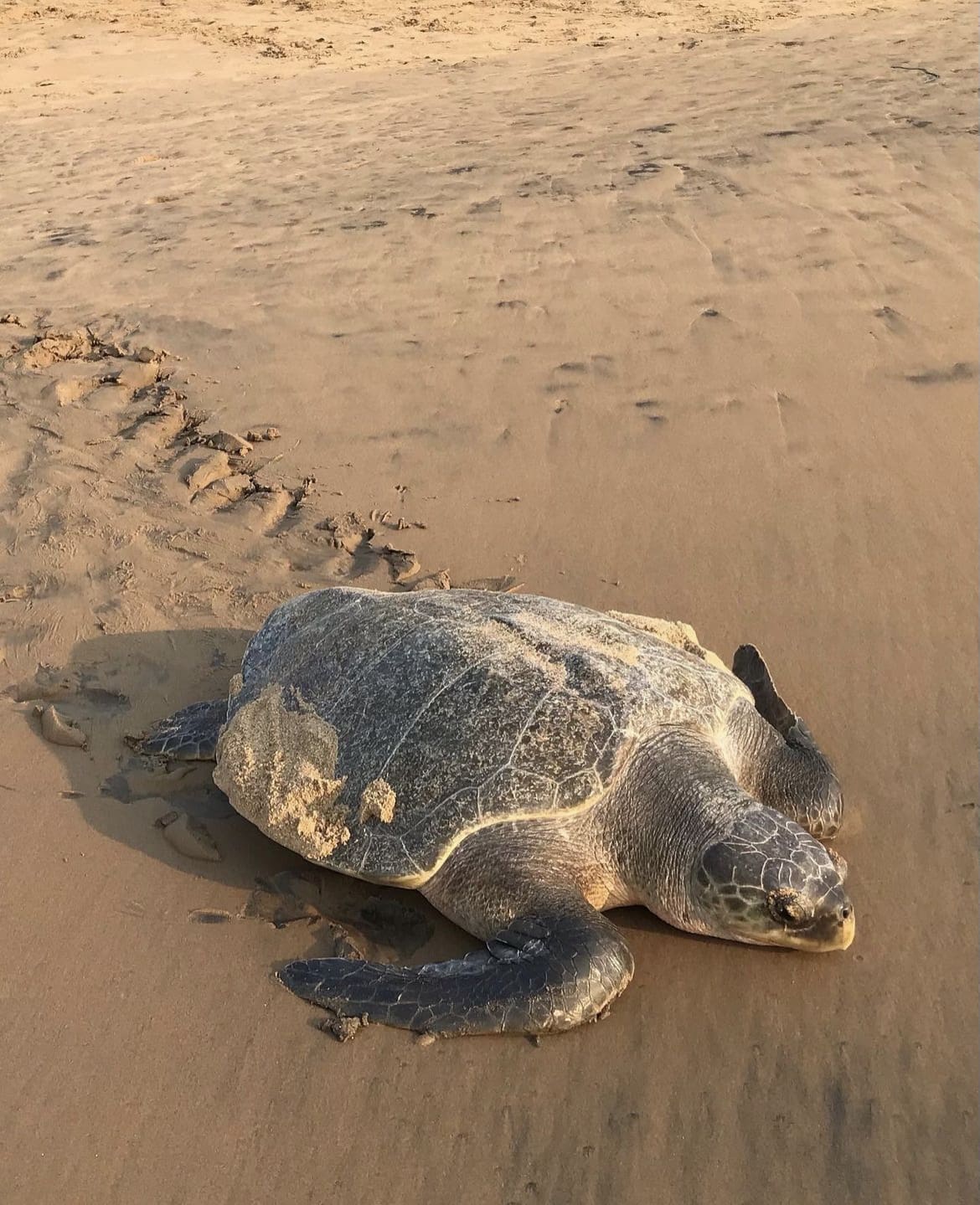
What Do Olive Ridley Turtles Eat?
Moving on to the diet, Olive Ridley Turtles have a fairly eclectic palate, suited to opportunistic feeders. They predominantly munch on a variety of marine creatures. Their diet includes jellyfish, which are abundant and provide a good energy source, albeit with a risk due to their stinging tentacles. Olive Ridleys also eat snails, crabs, and a variety of fish, making the most of what the ocean buffet offers.
During their migrations, they often pass through nutrient-rich waters where they can feast on algae and small invertebrates. This diverse diet helps sustain them over long distances and supports their energy needs for the arduous task of nesting. It’s a fine balance in their ecological role as both predator and prey, contributing to the health of marine ecosystems by controlling jellyfish populations and more.
Olive Ridley Turtle Social Structure
When it comes to social behavior, Olive Ridley Turtles are somewhat enigmatic. For the most part, they are solitary creatures, roaming the vast oceans alone. However, they exhibit highly social behavior during the nesting season, a phenomenon that is quite unique among marine turtles. This event, known as arribada, sees thousands of female turtles coming together on the same beach, where they hatched decades ago, to lay their eggs.
This mass nesting is a stunning display of coordination and timing, believed to be triggered by environmental cues like the moon’s phase and ocean currents. This behavior not only maximizes the hatchlings’ survival chances by overwhelming predators with sheer numbers but also provides a rare glimpse into the social lives of these usually solitary creatures.
How Do Olive Ridley Turtles Reproduce?
Reproduction is a critical phase in the life of an Olive Ridley Turtle, and it is fraught with peril and effort. The process begins with the females making the arduous journey back to their birthplace, which can involve swimming thousands of miles. Once they arrive, they engage in a nighttime nesting ritual, which includes digging a nest in the sand with their rear flippers, laying dozens of eggs, and then meticulously covering them up to protect them from predators and the environment.
Olive Ridleys lay between 50 to 100 eggs per clutch and can nest multiple times in a single season. After laying, the females return to the sea, leaving the eggs to incubate for about 45 to 60 days. The hatchlings emerge en masse and scramble to the sea, facing numerous predators along the way. This perilous start to life is one reason why so many hatchlings are needed for just a few to survive to adulthood.
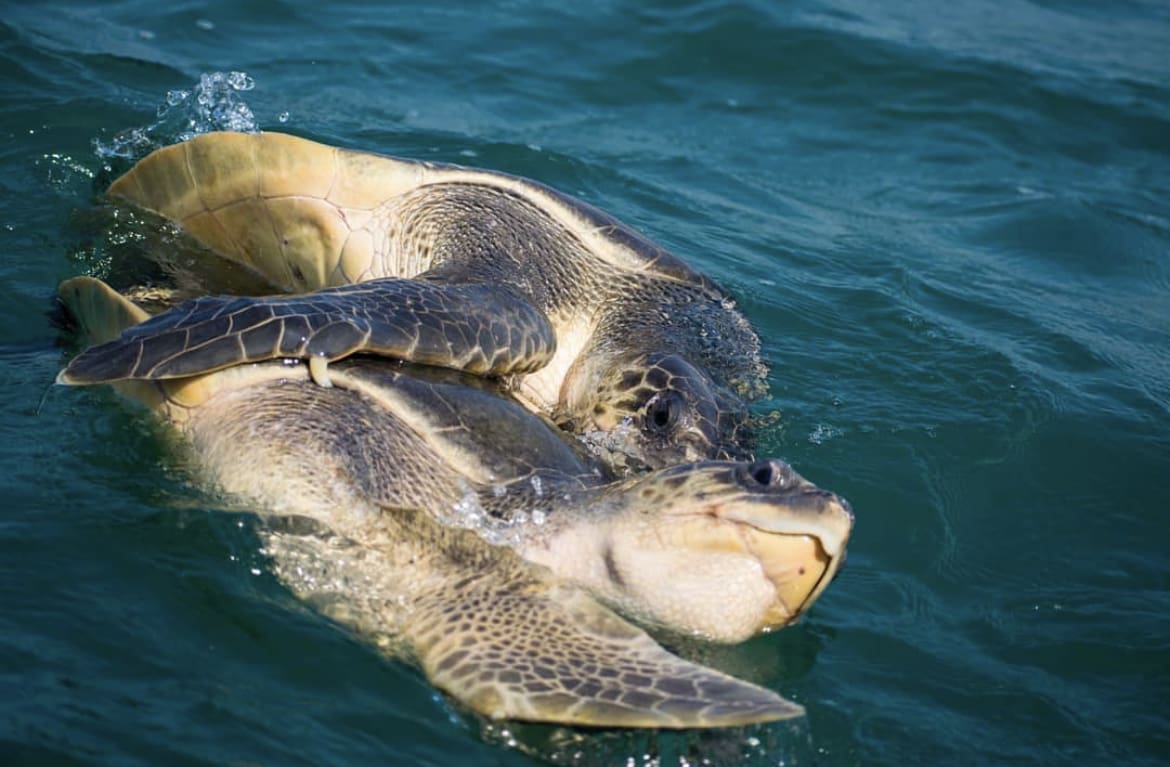
How Long Do Olive Ridley Turtles Live?
The lifespan of an Olive Ridley Turtle can be quite lengthy, with individuals known to live up to 50 years or more in the wild. However, reaching such an old age is no small feat given the myriad challenges they face, from natural predators in their early days to human-induced threats like fishing nets and plastic pollution as they grow.
The longevity of these turtles is a testament to their resilience and adaptiveness in the face of changing environmental conditions. Their long lifespan also contributes to the species’ survival, as it allows females many years to reproduce, helping maintain the population despite low hatchling survival rates.
Are Olive Ridley Turtles Territorial?
Unlike many other animal species, Olive Ridley Turtles are not particularly territorial in the traditional sense. They do not defend specific areas in the ocean or on nesting beaches. However, during nesting season, individual behaviors might give a semblance of territoriality as females vie for the best spots on the beach to lay their eggs. This behavior is more about securing a prime location that will offer the best chance for their offspring’s survival rather than defending a territory against rivals.
In the ocean, Olive Ridleys are nomadic by nature. They follow the currents and migrate across vast distances to find food and reach their nesting sites. This lack of territoriality helps maximize their adaptability, allowing them to exploit various marine environments for feeding and breeding without the constraints of defending a particular area.
How Fast Are Olive Ridley Turtles?
When it comes to speed, Olive Ridley Turtles are not the fastest swimmers in the ocean, but they are certainly not slouches. They can reach speeds of up to 22 miles per hour in short bursts when they feel threatened or need to escape predators. However, their usual swimming speed is much slower, suited to their long migratory journeys and leisurely foraging habits.
Their flipper design plays a crucial role in their swimming abilities. The front flippers are used for propulsion while the smaller rear flippers steer, allowing them to navigate through the water efficiently. This adaptation is essential for their survival in the open ocean, where speed and maneuverability can mean the difference between life and death.
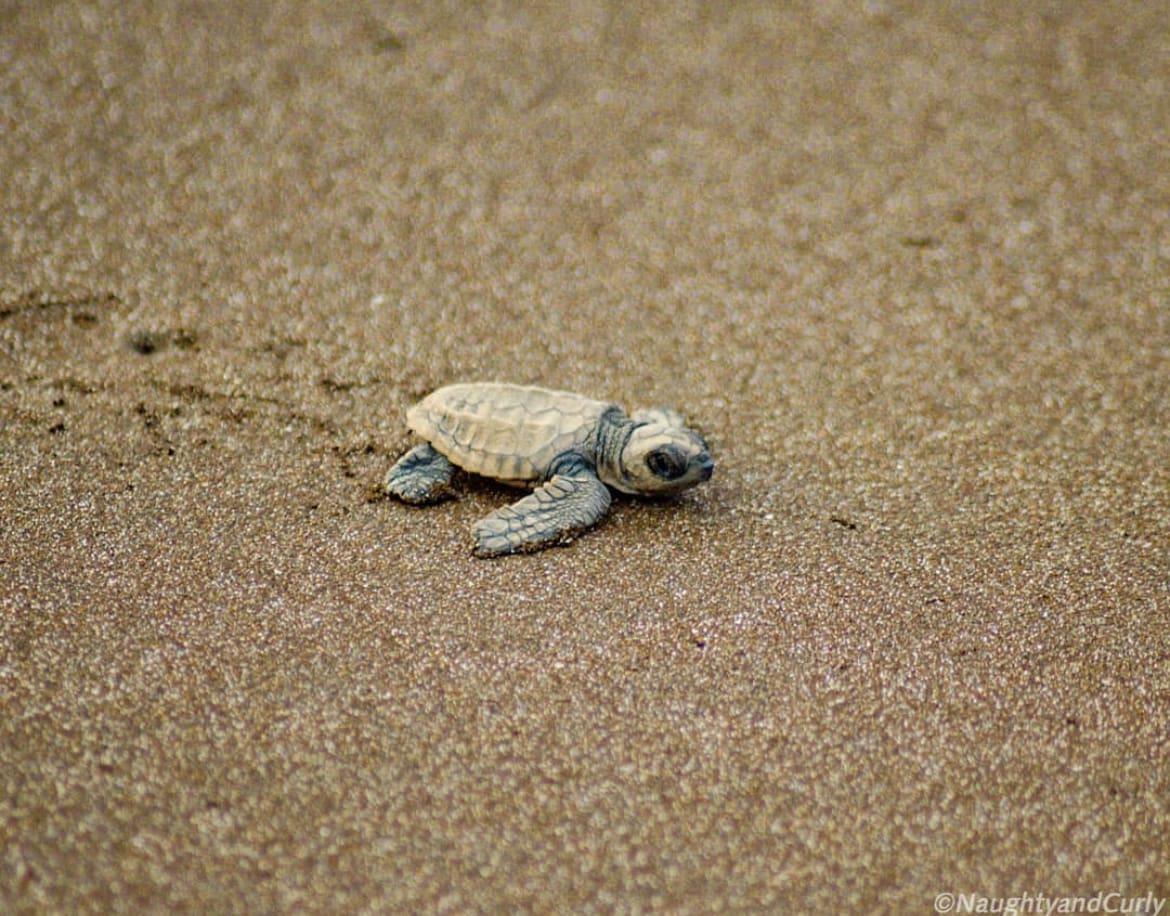
Where Do Olive Ridley Turtles Live?
Olive Ridley Turtles are among the most widely distributed of all sea turtles. They inhabit the warm waters of the Pacific, Atlantic, and Indian Oceans, demonstrating a remarkable adaptability to various marine environments. These turtles are typically found in areas where the water temperature stays above 28 degrees Celsius, which supports their cold-blooded metabolism.
Their habitat ranges from the coastal areas and estuaries where they feed and grow to the high seas where they spend much of their lives. The beaches selected for nesting are typically sandy and secluded, often located on remote coastlines that can support the arribada. Countries like Mexico, India, and Costa Rica are famous for these mass nesting events and have become critical to the global conservation efforts for the species.
Olive Ridleys often return to the same nesting sites where they were born, a behavior known as natal homing. This incredible navigational feat is believed to be guided by a combination of magnetic cues, the sun’s position, and the unique smell of their birthplace.
How Many Olive Ridley Turtles Are There in the Wild?
Estimating the population of Olive Ridley Turtles in the wild is a complex task due to their vast range and the secluded nature of their nesting sites. However, they are considered the most abundant of all sea turtles, with millions believed to exist worldwide. Despite these seemingly large numbers, their populations have faced significant declines in certain areas due to human activities and natural predators.
The major nesting sites, especially those experiencing arribada, play a critical role in understanding and managing their populations. These sites are closely monitored, and data collected from them helps conservationists track trends in population size and health. Although Olive Ridleys are widespread, the fragmentation of populations and the specific environmental requirements for their nesting sites mean that protecting these areas is crucial for their long-term survival.
Are Olive Ridley Turtles Endangered?
The Olive Ridley Turtle is classified as Vulnerable according to the International Union for Conservation of Nature (IUCN), though it falls under different classifications regionally based on specific threats and population conditions. The primary reasons for this status are habitat loss, egg poaching, and incidental capture in fishing gear.
Despite being the most numerous of sea turtles, the Olive Ridley faces similar threats as its more endangered cousins. Their survival depends heavily on the continued health of their nesting and foraging habitats and the mitigation of human-induced threats. International and local conservation programs focusing on protecting nesting beaches and regulating fishing practices have been crucial in stabilizing some of the populations.

Threats to Olive Ridley Turtles in the Wild
The threats facing Olive Ridley Turtles are diverse and often interconnected, spanning from human activities to natural challenges:
- Bycatch in Fishing Gear: Olive Ridleys are frequently caught in gillnets, trawl nets, and longlines intended for other marine species. These accidental captures can cause drowning or serious injuries to the turtles.
- Egg Poaching: In many regions, turtle eggs are considered a delicacy or are believed to have medicinal properties, leading to illegal poaching of eggs from nesting beaches.
- Habitat Loss: Coastal development, pollution, and climate change are altering and destroying some of the natural habitats that Olive Ridleys rely on for nesting and foraging.
- Natural Predators: While natural predation is a normal ecological process, the high predation rate of eggs and hatchlings by birds, mammals, and fish can severely impact populations, especially where human activities have already stressed the species.
- Climate Change: Rising sea levels and changing temperature patterns affect the beaches used for nesting. Warmer sand temperatures can also skew the sex ratio of hatchlings, potentially leading to long-term population imbalances.
Where to See Olive Ridley Turtles
Olive Ridley Turtles can be observed in several parts of the world, but there are a few spots renowned for their spectacular sightings, especially during the nesting season. One of the most famous locations is Ostional Wildlife Refuge in Costa Rica, where the phenomenon of arribada can be witnessed as thousands of turtles come ashore to nest. Similarly, the Gahirmatha Beach in Odisha, India, hosts one of the largest gatherings of Olive Ridleys in the world.
For those interested in seeing these turtles in their natural habitat, it’s essential to plan the visit during the nesting or hatching seasons, which vary by location. Local conservation groups often offer guided tours that not only provide a chance to see the turtles but also educate visitors on the turtles’ behaviors and the challenges they face.
Tips for Spotting Olive Ridley Turtles
Spotting Olive Ridley Turtles, whether at sea or during their nesting rituals, can be an awe-inspiring experience. Here are a few tips to increase your chances and make your observation a responsible one:
- Check Local Guidelines: Always adhere to local wildlife watching guidelines to ensure that your presence does not disturb the turtles or their habitat.
- Maintain a Respectful Distance: Whether you’re watching nesting turtles or encountering them while snorkeling or diving, keep a respectful distance to avoid causing them stress.
- Use Red Lights for Night Watching: If you’re observing night nesting, use a red flashlight as turtles are less sensitive to red light, minimizing disruption during their critical nesting process.
- Join Organized Tours: Opt for tours led by reputable guides who use sustainable practices to ensure that wildlife tourism does not harm the turtles.
Facts about The Olive Ridley Turtle
- Olive Ridleys are named after the olive color of their heart-shaped shell.
- They are known for their mass nesting called arribada, where thousands of females come ashore at the same time.
- Despite their wide distribution, they are one of the smallest sea turtles, typically weighing around 100 pounds.
- They can lay between 50 to 100 eggs per clutch and may lay eggs multiple times in one season.
- Olive Ridleys have a varied diet but primarily feed on jellyfish, algae, lobsters, and small fish.
Myths about The Olive Ridley Turtle
- Myth: Turtles cry when they lay eggs because of sadness. Fact: Turtles secrete a salty solution from their eyes, which helps them get rid of excess salt and maintain their health.
- Myth: Eating turtle eggs is an aphrodisiac. Fact: There is no scientific evidence to support this; the practice is detrimental to turtle populations.
- Myth: Olive Ridley Turtles return to the exact spot where they were born to nest. Fact: While they return to the general area, they do not always return to the exact spot.
The Olive Ridley Turtle remains one of the ocean’s most fascinating creatures, with its unique nesting behaviors and crucial role in marine ecosystems. Despite facing numerous threats, their resilience and the concerted efforts of conservationists worldwide offer hope for their future. By learning about and respecting these remarkable turtles, we can all contribute to their conservation and ensure that they continue to thrive in the wild for generations to come.
By diving deep into the life and challenges of the Olive Ridley Turtle, we not only expand our knowledge of marine life but also enhance our appreciation for the intricate balance of nature’s ecosystems. Whether you’re an avid wildlife enthusiast or a casual beachgoer, understanding and respecting these ancient mariners can make a significant difference in their survival and the health of our oceans.
